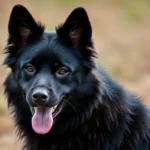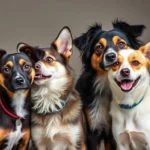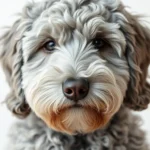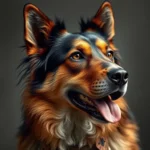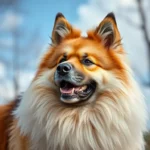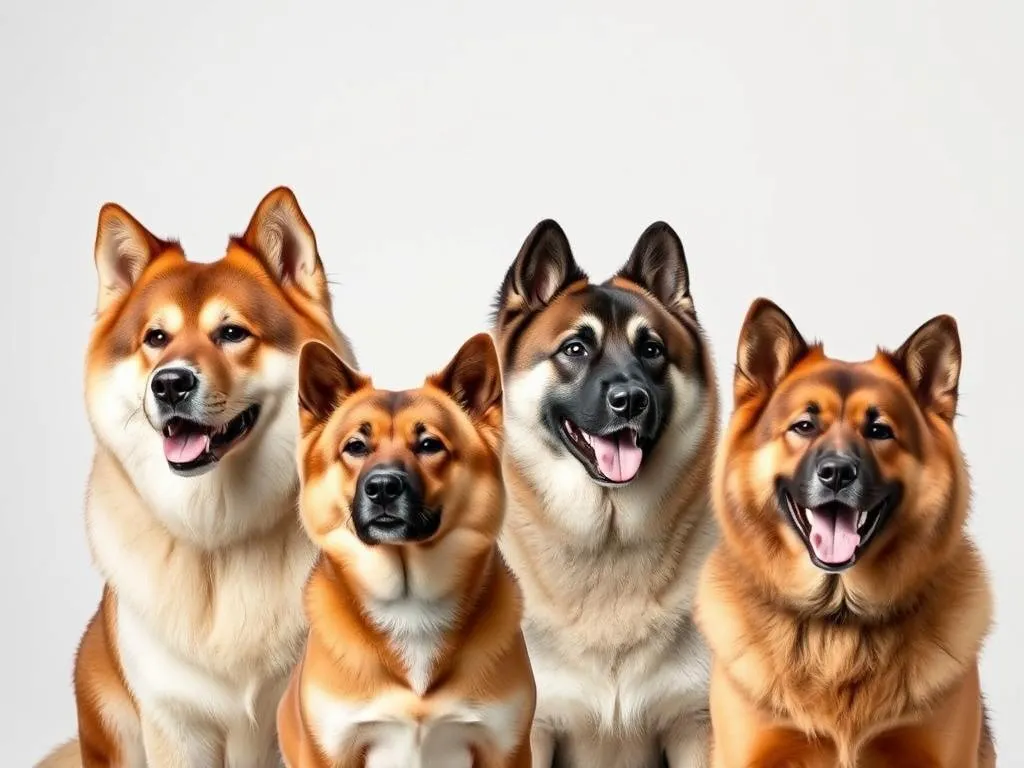
Introduction
The Akita is a majestic and powerful breed known for its loyalty, courage, and dignified presence. Standing at about 24 to 28 inches tall and weighing between 70 to 130 pounds, Akitas are a large breed with a robust build. Their thick double coat can come in various colors, including white, brindle, and pinto. These dogs are not only striking in appearance but also possess a strong character, often forming a deep bond with their families.
Originating from Japan, Akitas have a rich history tied to the country’s culture and traditions. Initially bred for hunting and guarding, they were revered as symbols of good health, happiness, and long life. Their loyalty and protective instincts make them superb family companions, but understanding their unique traits is crucial for prospective dog owners.
For those considering an Akita, it’s essential to explore breeds with similar characteristics. This article serves as a guide to help potential owners find alternatives that may better fit their lifestyles. By examining other breeds, we can narrow down choices based on temperament, appearance, and care needs.
Why Consider Breeds Similar to Akitas?
Understanding Breed Characteristics
When selecting a dog, understanding its breed characteristics is vital. Each breed has specific traits that can influence compatibility with your lifestyle. Akitas are known for their loyalty, independence, and strong protective instincts. Recognizing these characteristics can help you find a breed that closely aligns with your expectations and lifestyle.
Benefits of Similar Breeds
Exploring breeds similar to Akitas can lead to discovering dogs that might better suit your living situation. Some breeds may require less grooming or have different exercise needs, making them a more manageable option for busy families or individuals.
Criteria for Similarity
Temperament and Personality
Akitas are known for their loyalty and protective nature. They are independent thinkers, often requiring an experienced owner who can provide consistent training. When looking at similar breeds, it’s essential to identify those that share these personality traits, such as loyalty, intelligence, and a strong sense of independence.
Physical Attributes
In terms of physical characteristics, Akitas are large, muscular dogs with a thick coat. Breeds that are similar often share comparable sizes and coat types. Understanding these similarities can help potential owners prepare for grooming and care routines.
Care and Maintenance
Grooming needs, exercise requirements, and training challenges vary significantly between breeds. Potential dog owners should consider these factors when exploring breeds similar to Akitas to ensure they choose a dog that fits seamlessly into their lives.
The 6 Dog Breeds Similar to Akitas
Shiba Inu
Overview
The Shiba Inu is a small to medium-sized breed, typically weighing between 17 to 23 pounds and standing around 13.5 to 16.5 inches tall. Known for their fox-like appearance, Shiba Inus possess a spirited and bold personality.
Similarities to Akitas
Both breeds exhibit a strong sense of loyalty and independence. Shiba Inus, like Akitas, are known for their protective instincts toward their families.
Differences
One key difference is size; Shiba Inus are significantly smaller than Akitas. Additionally, they tend to have higher energy levels, often requiring more playtime and mental stimulation.
Alaskan Malamute
Overview
The Alaskan Malamute is a large, powerful breed, weighing between 75 to 100 pounds and standing 23 to 25 inches tall. This breed is known for its strength and endurance, originally bred for hauling heavy sleds in harsh conditions.
Similarities to Akitas
Both breeds share a loyal and protective nature, often forming strong bonds with their families. They also require a firm handler and consistent training to thrive.
Differences
Alaskan Malamutes tend to be more social and enjoy interacting with other dogs and people. Their socialization needs are higher, and they require ample exercise to stay happy and healthy.
Siberian Husky
Overview
The Siberian Husky is a medium-sized breed, typically weighing between 35 to 60 pounds and standing 20 to 23.5 inches tall. Huskies are known for their striking blue or multicolored eyes and thick double coat.
Similarities to Akitas
Both breeds exhibit a pack mentality, needing companionship and social interaction. They are intelligent and require consistent, positive training methods.
Differences
Huskies are known for their high energy levels and need for extensive exercise. They can also be more challenging to train due to their independent streak and desire to explore.
Chow Chow
Overview
The Chow Chow is a medium to large breed, weighing between 45 to 70 pounds and standing about 17 to 20 inches tall. Distinctive for their lion-like mane and unique blue-black tongue, Chow Chows have a dignified yet aloof demeanor.
Similarities to Akitas
Both breeds are independent thinkers and can be strong-willed. They are also loyal to their families and can be protective.
Differences
Chow Chows require more grooming due to their thick, fluffy coat. They may also be less sociable than Akitas, often preferring to bond closely with their immediate family.
Japanese Shikoku
Overview
The Japanese Shikoku is a medium-sized breed, weighing between 35 to 65 pounds and standing about 17 to 21 inches tall. This breed is agile and alert, originally bred for hunting in mountainous regions.
Similarities to Akitas
Shikokus share a loyal and active temperament, making them excellent companions. They are also known for their independence and alert nature.
Differences
Shikokus are rarer than Akitas, making them less common in homes. They may also require specific care due to their hunting background and high energy levels.
Belgian Malinois
Overview
The Belgian Malinois is a highly intelligent and versatile breed, weighing between 40 to 80 pounds and standing about 22 to 26 inches tall. Often used in police and military roles, they are known for their work ethic and loyalty.
Similarities to Akitas
Both breeds exhibit high intelligence and a protective nature, often forming strong bonds with their owners. They are also known for their loyalty and dedication.
Differences
Belgian Malinois require significant exercise and mental stimulation, often needing more engagement than Akitas. They thrive in active environments and benefit from structured training.
Comparing the Breeds
| Breed | Size (lbs) | Temperament | Exercise Needs | Grooming Needs |
|---|---|---|---|---|
| Akita | 70-130 | Loyal, Independent | Moderate | Moderate |
| Shiba Inu | 17-23 | Loyal, Spirited | High | Low |
| Alaskan Malamute | 75-100 | Loyal, Friendly | High | Moderate |
| Siberian Husky | 35-60 | Playful, Social | Very High | Moderate |
| Chow Chow | 45-70 | Loyal, Aloof | Moderate | High |
| Japanese Shikoku | 35-65 | Loyal, Active | Moderate | Low |
| Belgian Malinois | 40-80 | Intelligent, Protective | Very High | Low |
In-Depth Analysis
Each breed listed above has its unique blend of characteristics that may appeal to different types of dog owners. For example, if you’re looking for a companion that requires less grooming, the Shiba Inu or Japanese Shikoku might be perfect options. On the other hand, if you value loyalty and protection, both the Alaskan Malamute and Belgian Malinois stand out.
However, with high energy breeds like the Siberian Husky and Belgian Malinois, potential owners should consider their ability to provide ample exercise and mental stimulation. In contrast, breeds like the Chow Chow may require more grooming and might be less social.
Choosing the Right Breed for You
Assessing Your Lifestyle
When considering a dog, think about your lifestyle, including your activity level, living space, and family dynamics. Some breeds require more exercise and socialization, while others are more suited to a quieter home.
Matching Breeds to Your Needs
It’s essential to match your lifestyle with a breed’s needs. For instance, if you live in a smaller apartment and lead a more sedentary lifestyle, a Shiba Inu or Chow Chow might be more fitting. Conversely, if you enjoy outdoor activities and have ample space, an Alaskan Malamute or Siberian Husky could thrive in your environment.
Consulting Experts
Before making a final decision, it’s beneficial to consult with breeders, shelters, or dog trainers. They can provide you with valuable insights into the specific needs and traits of the breeds you’re considering.
Conclusion
In summary, exploring breeds similar to Akitas can open the door to finding the perfect canine companion for your lifestyle. Each breed discussed—Shiba Inu, Alaskan Malamute, Siberian Husky, Chow Chow, Japanese Shikoku, and Belgian Malinois—offers unique qualities that may resonate with different dog owners.
By carefully considering your lifestyle, preferences, and the characteristics of these breeds, you can make an informed decision that leads to a fulfilling relationship with your new furry friend. Remember, researching and understanding personal circumstances before making a decision is key to ensuring a harmonious and happy home for both you and your future dog.
FAQs
What are the main characteristics of Akitas?
Akitas are large, loyal, and independent dogs known for their protective instincts and strong bond with their family.
How do Akitas compare in size to the breeds listed?
Akitas are generally larger than the breeds listed, such as the Shiba Inu and Chow Chow, but comparable in size to the Alaskan Malamute and Siberian Husky.
Are similar breeds as loyal as Akitas?
Many breeds mentioned, like the Belgian Malinois and Alaskan Malamute, also exhibit high levels of loyalty and protective behavior, similar to that of Akitas.
Do breeds similar to Akitas have the same grooming needs?
No, grooming needs vary. For example, Chow Chows require more grooming than Akitas, while breeds like Shiba Inus have lower grooming requirements.
Can I train a breed similar to an Akita easily?
Training ease varies by breed. While breeds like Siberian Huskies can be challenging due to their independent nature, Belgian Malinois are highly trainable due to their intelligence and eagerness to please.



